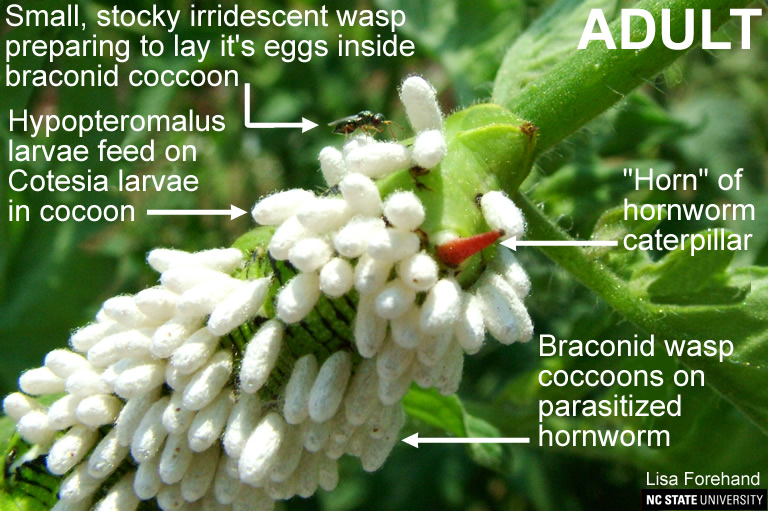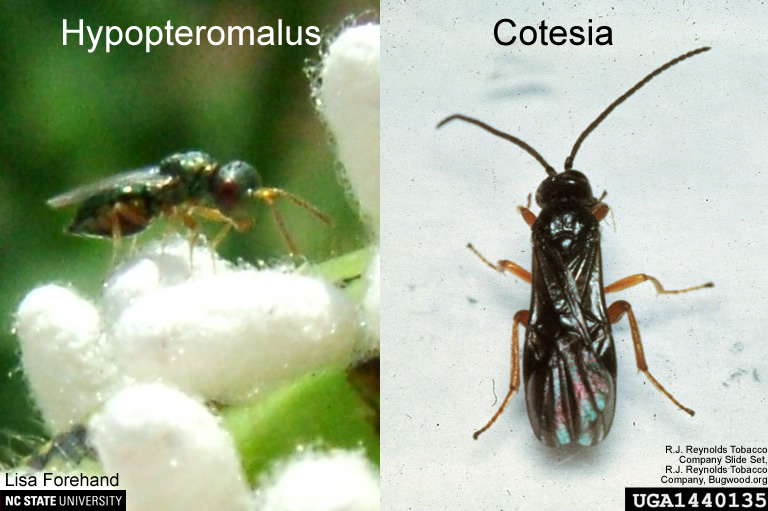Hyperparasitoids
go.ncsu.edu/readext?563386
en Español / em Português
El inglés es el idioma de control de esta página. En la medida en que haya algún conflicto entre la traducción al inglés y la traducción, el inglés prevalece.
Al hacer clic en el enlace de traducción se activa un servicio de traducción gratuito para convertir la página al español. Al igual que con cualquier traducción por Internet, la conversión no es sensible al contexto y puede que no traduzca el texto en su significado original. NC State Extension no garantiza la exactitud del texto traducido. Por favor, tenga en cuenta que algunas aplicaciones y/o servicios pueden no funcionar como se espera cuando se traducen.
Português
Inglês é o idioma de controle desta página. Na medida que haja algum conflito entre o texto original em Inglês e a tradução, o Inglês prevalece.
Ao clicar no link de tradução, um serviço gratuito de tradução será ativado para converter a página para o Português. Como em qualquer tradução pela internet, a conversão não é sensivel ao contexto e pode não ocorrer a tradução para o significado orginal. O serviço de Extensão da Carolina do Norte (NC State Extension) não garante a exatidão do texto traduzido. Por favor, observe que algumas funções ou serviços podem não funcionar como esperado após a tradução.
English
English is the controlling language of this page. To the extent there is any conflict between the English text and the translation, English controls.
Clicking on the translation link activates a free translation service to convert the page to Spanish. As with any Internet translation, the conversion is not context-sensitive and may not translate the text to its original meaning. NC State Extension does not guarantee the accuracy of the translated text. Please note that some applications and/or services may not function as expected when translated.
Collapse ▲- Common Name: Cotesia Hyperparasitoid
- General Category: Parasitoid
- Taxonomic Classification: Hymenoptera: Pteromailidae
- Scientific Name: Hypopteromalus tabacum
Description
Hyperparasitoids are parasites of parasites. That is, they specialize in parasitizing insects that themselves are parasitic on other insects. Hypopteromalus tabacum is a native hyperparasitoid that attacks Cotesia congregata cocoons after they have emerged from hornworm caterpillars. These wasps will parasitize Cotesia pupae inside cocoons, after the Cotesia have finished feeding inside their hornworm hosts. Because of this, they are usually considered detrimental to biological control. In commercial parasitoid rearing operations, hyperparasitoids are carefully removed before large-scale rearing operations are begun. Quarantine facilities are used to screen out hyperparasitoids when a promising new parasitoid is imported for use in an importation biological control program.


Identification
Review the images for tips on how to identify these predators.
Adults
These wasps are shorter and stockier, and have shorter legs and antennae than Cotesia wasps. They also have metallic or iridescent coloration.
Larvae
Because the grub-like larvae parasitize Cotesia wasp larvae inside cocoons, they would not be seen unless carefully dissected out. Cotesia wasps usually chew holes in the cocoon tips to emerge after they have completed their development. Hypopteromalus will chew emergence holes on the sides of cocoons.
Value in Pest Management
Because Hypopteromalus wasps parasitize beneficial parasitoid wasps, they are considered detrimental to pest management.
Origin and Distribution
Native in southern and southwestern United States.
Discover Life – Hypopteromalus


